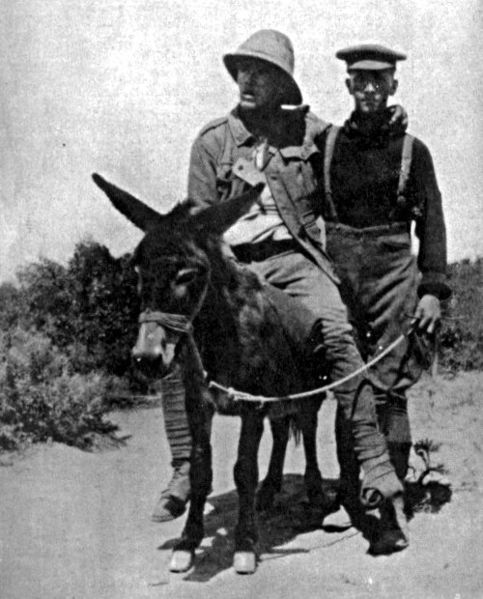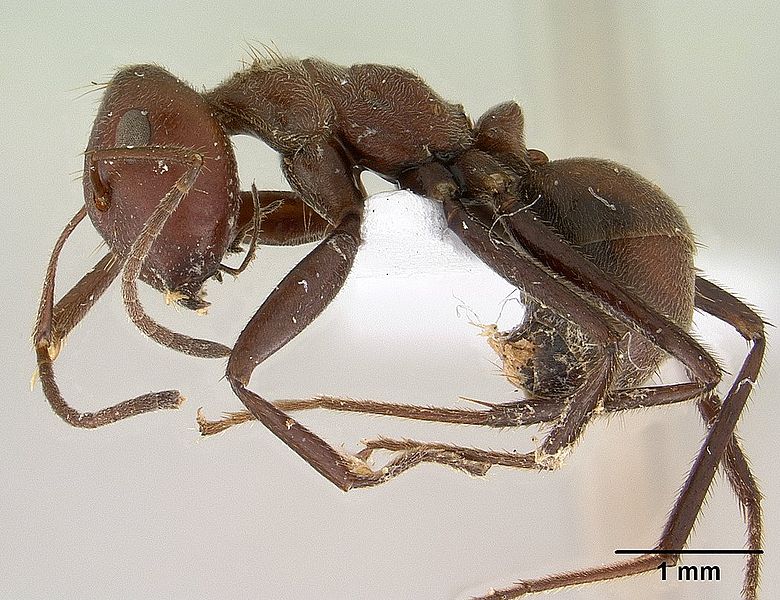Do Good, Feel Good, Is Good
 Sunday, December 19, 2010 at 07:41AM
Sunday, December 19, 2010 at 07:41AM  Image by 'smil.As we enter the festive season (Christmas, Hanukkah, winter solstice, etc) my mind turned to the act of gift giving and I was reminded of a piece I presented on Einstein a Go Go about altruism. Altruism can be defined as a selfless concern for the wellbeing of others. This implies that to show altruism, one needs to aware of self (and presumably that which is non-self). Only a few organisms show evidence of self-awareness, and we know that humans are one of these animals.
Image by 'smil.As we enter the festive season (Christmas, Hanukkah, winter solstice, etc) my mind turned to the act of gift giving and I was reminded of a piece I presented on Einstein a Go Go about altruism. Altruism can be defined as a selfless concern for the wellbeing of others. This implies that to show altruism, one needs to aware of self (and presumably that which is non-self). Only a few organisms show evidence of self-awareness, and we know that humans are one of these animals.
The meaning of life is to live long enough to pass on your genes as many times as possible. Staying alive, however is not easy, so this does not simply mean being selfish.
We share many of our genes with our families and evolution has lead to very strong familial bonding. When threatened, we are usually very defensive of our kinfolk. Over millennia - for most of human history in fact - we have lived in extended family groups and tribes. These groups have developed rules of behaviour, which are of benefit to the whole group. This might include gathering food to share, helping raise children, building shelters and working together to protecting the group from predators or rivals. These rules have developed into social norms that are still common in most societies.
 But is it really selfless to help others because that is what’s best for everyone – including you? This is more accurately reciprocal altruism.
But is it really selfless to help others because that is what’s best for everyone – including you? This is more accurately reciprocal altruism.
In 2006 Jorge Moll and Jordan Grafman, used fMRI to examine what happens in the brain during acts of altruism. When subjects received a monetary reward, the mesolimbic pathway lit up. This part of the brain also lights up in response to food and sex. Interestingly this section also lit up when subjects made a charitable donation. The really interesting bit is that the when making a charitable donation, the subject’s sub-genual cortex/septal region also lit up. These structures are very closely related to social attachment and bonding in other species. Altruism it seems might be a very basic and pleasure-rewarding part of our makeup.
If we define altruism as acts that are of clear benefit to other individuals and to groups, rather than simply acts that benefit the individual, then organisms that exhibit these behaviours are far more common.
Bonobos have been observed aiding injured or handicapped bonobos and vampire bats will regurgitate blood to share with sick roost mates or bats that have been unable to find a meal. Then there’s the intriguing case of dictyostelids. These are a group of cellular slime molds or social amoebae. When food is plentiful, they exist as individual amoebae, which feed and divide normally. However when the food is in short supply, they aggregate to form a multicellular assembly, called a pseudoplasmodium or slug. It seems that when the going gets tough, amoebae really stick together. The newly formed slug responds to changes in light and temperature, it is able migrate and it has a definite anterior and posterior. The slug is even able to reproduce, forming a fruiting body with a stalk that supports balls of spores. These spores remain inactive until food is once more available and they become new amoebae.
 Camponotus saundersi. Image by Noel Tawatao (AntWeb).One of the most impressive examples of altruism belongs to a particular species of carpenter ant (of the Camponotus genus). Workers of these species are characterised by greatly enlarged mandibular glands that run the whole length of their body. If their nest is under threat by small insect attackers, they will violently contract their abdominal muscles, rupturing these glands and releasing a sticky poison. This poison (which contains acetophenones, among other thing) immobilises the victim and the act of releasing it in this way kills the ant. Suicidal altruism – that’s really taking one for the team. This was the inspiration for the Ologism track ‘Ant Establishmentism’.
Camponotus saundersi. Image by Noel Tawatao (AntWeb).One of the most impressive examples of altruism belongs to a particular species of carpenter ant (of the Camponotus genus). Workers of these species are characterised by greatly enlarged mandibular glands that run the whole length of their body. If their nest is under threat by small insect attackers, they will violently contract their abdominal muscles, rupturing these glands and releasing a sticky poison. This poison (which contains acetophenones, among other thing) immobilises the victim and the act of releasing it in this way kills the ant. Suicidal altruism – that’s really taking one for the team. This was the inspiration for the Ologism track ‘Ant Establishmentism’.
Recently, researchers at the Howard Hughes Medical Institute in Chevy Chase and Boston University showed that even humble E. coli bacteria are looking out for each other. To explore processes that underpin the development of antibiotic resistance, the researchers were growing bacteria in a bioreactor. They then trickled a synthetic antibiotic (norfloxacin) in to the bioreactor. As they raised the levels of antibiotic, the scientists periodically re moved samples of bacteria to determine the minimum amount of antibiotic needed to stop growth of the E. coli. They found that, taken as a whole, the bacteria population was more resistant than individual samples. To cut a longer story short, E. coli that were resistant to the antibiotic were producing indole, a substance that pumps the antibiotic out of the cell and protects the bacteria from the build up of toxic free radicals. The production of indole – while beneficial overall – comes at a cost. The resistant bacteria don't grow as well as they otherwise could, because they're producing indole for the other (non-resistant) bacteria.
Ever since Darwinian evolution began to gain traction, there have been those who have tried to simplistically characterise nature as cruel and founded in selfishness. Survival of the fittest, dog-eat-dog, it’s a jungle out there, etc. Rather, it seems that looking after each other is hardwired into us. It’s apparently of benefit to us all, so today do something nice for someone, and yourself.

Reader Comments